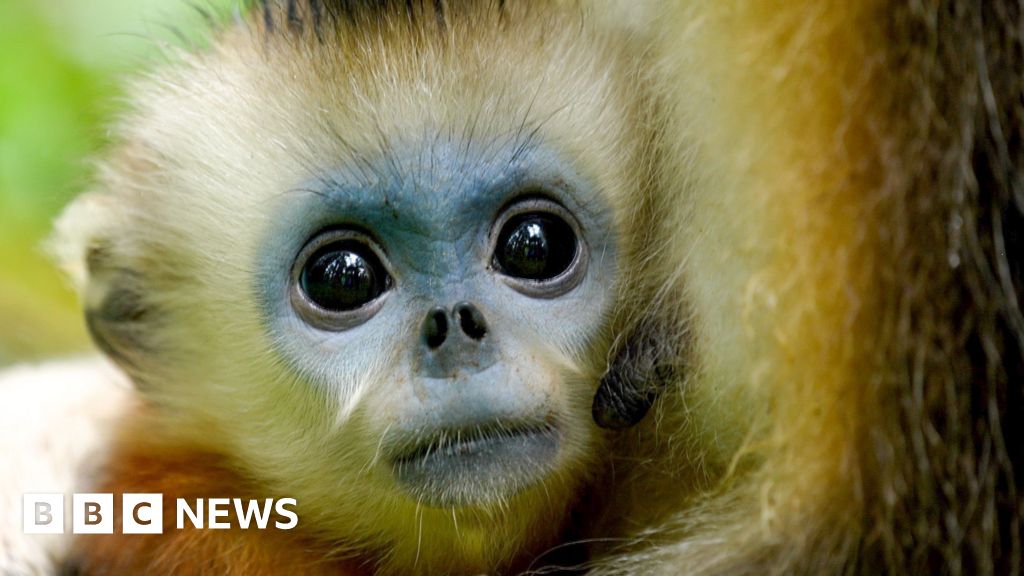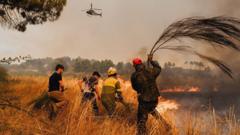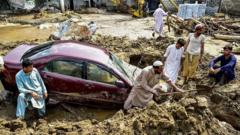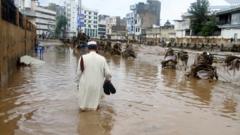\
Australia continually draws attention for its remarkable natural wonders, including the Great Barrier Reef, renowned as the largest coral reef system globally and classified as a UNESCO World Heritage Site. However, the risks also extend to the rugged western coastline, home to Ningaloo Reef, the world’s largest fringing reef, which has recently come under duress.
Situated a considerable distance from Perth, Ningaloo boasts an expansive marine ecosystem filled with diverse wildlife, including magnificent manta rays and whale sharks. Yet this year, these precious habitats are severely stressed due to a marine heatwave, which has led to significant coral bleaching — a phenomenon alarming both scientists and conservationists alike.
As temperatures rise, the symbiotic relationship between corals and the algae that give them their vibrant colors breaks down, leading to this bleaching effect. Paul Gamblin from the Australian Marine Conservation Society describes the situation as “a raging underwater bushfire” that has persisted for months, hurting both marine life and local communities dependent on tourism.
The marine heatwave began in the Caribbean before moving across the Indo-Pacific, impacting various reefs. With 2024 already marked by high water temperatures, scientists note the unprecedented nature of warming affecting both eastern and western Australian coasts simultaneously. This scenario mirrors the fourth global bleaching event impacting over 80% of the world's coral reefs, sparking urgent calls for action.
Dr. Kate Quigley, a research scientist, highlights the urgency, explaining that prolonged warming could lead to higher coral mortality. While ongoing monitoring continues, there remains uncertainty regarding how many corals may recover post-bleaching. Tourists have noted the urgent threats to Ningaloo's seascapes, with reports of lifeless underwater scenes leaving both visitors and residents disheartened.
As the situation worsens, intensified debates emerge regarding the impact of fossil fuel projects in the region. The North West Shelf gas plant, one of the largest fossil fuel developments worldwide, has drawn criticism due to its potential contribution to climate change, which further threatens marine ecosystems.
Advocates argue that despite the undeniable relationship between carbon emissions and rising temperatures, the Australian government continues to support new fossil fuel endeavors, raising concerns about prioritizing economic interests over environmental preservation.
Yet, amidst these global and local challenges, scientists tirelessly work to safeguard Ningaloo Reef. Innovative research methods involving drone surveillance aid in coral health assessments, while experimental breeding approaches aim to cultivate heat-resistant coral varieties.
Addressing these pressing issues extends beyond adapting to immediate environmental changes. Experts emphasize tackling the root causes of climate change, urging communities and policymakers to take decisive action against fossil fuel dependency. As coral reefs provide crucial ecosystem services, their decline could spur catastrophic consequences for marine biodiversity and human livelihoods.
To prevent further degradation of these vital habitats, a united effort toward conserving coral reefs and transitioning to renewable energy is more critical than ever, highlighting that the health of our ocean ecosystems is inextricably linked to the broader climate crisis.
Australia continually draws attention for its remarkable natural wonders, including the Great Barrier Reef, renowned as the largest coral reef system globally and classified as a UNESCO World Heritage Site. However, the risks also extend to the rugged western coastline, home to Ningaloo Reef, the world’s largest fringing reef, which has recently come under duress.
Situated a considerable distance from Perth, Ningaloo boasts an expansive marine ecosystem filled with diverse wildlife, including magnificent manta rays and whale sharks. Yet this year, these precious habitats are severely stressed due to a marine heatwave, which has led to significant coral bleaching — a phenomenon alarming both scientists and conservationists alike.
As temperatures rise, the symbiotic relationship between corals and the algae that give them their vibrant colors breaks down, leading to this bleaching effect. Paul Gamblin from the Australian Marine Conservation Society describes the situation as “a raging underwater bushfire” that has persisted for months, hurting both marine life and local communities dependent on tourism.
The marine heatwave began in the Caribbean before moving across the Indo-Pacific, impacting various reefs. With 2024 already marked by high water temperatures, scientists note the unprecedented nature of warming affecting both eastern and western Australian coasts simultaneously. This scenario mirrors the fourth global bleaching event impacting over 80% of the world's coral reefs, sparking urgent calls for action.
Dr. Kate Quigley, a research scientist, highlights the urgency, explaining that prolonged warming could lead to higher coral mortality. While ongoing monitoring continues, there remains uncertainty regarding how many corals may recover post-bleaching. Tourists have noted the urgent threats to Ningaloo's seascapes, with reports of lifeless underwater scenes leaving both visitors and residents disheartened.
As the situation worsens, intensified debates emerge regarding the impact of fossil fuel projects in the region. The North West Shelf gas plant, one of the largest fossil fuel developments worldwide, has drawn criticism due to its potential contribution to climate change, which further threatens marine ecosystems.
Advocates argue that despite the undeniable relationship between carbon emissions and rising temperatures, the Australian government continues to support new fossil fuel endeavors, raising concerns about prioritizing economic interests over environmental preservation.
Yet, amidst these global and local challenges, scientists tirelessly work to safeguard Ningaloo Reef. Innovative research methods involving drone surveillance aid in coral health assessments, while experimental breeding approaches aim to cultivate heat-resistant coral varieties.
Addressing these pressing issues extends beyond adapting to immediate environmental changes. Experts emphasize tackling the root causes of climate change, urging communities and policymakers to take decisive action against fossil fuel dependency. As coral reefs provide crucial ecosystem services, their decline could spur catastrophic consequences for marine biodiversity and human livelihoods.
To prevent further degradation of these vital habitats, a united effort toward conserving coral reefs and transitioning to renewable energy is more critical than ever, highlighting that the health of our ocean ecosystems is inextricably linked to the broader climate crisis.



















